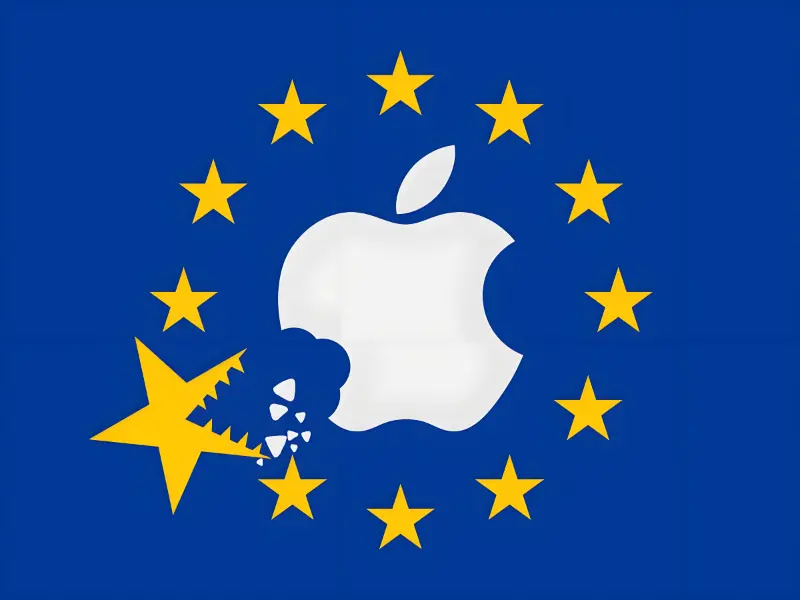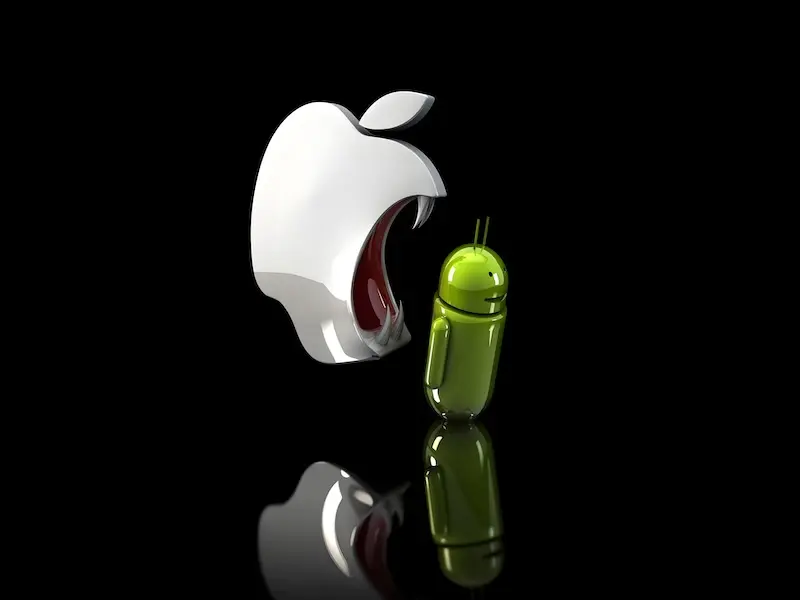- iPhone sales are relatively low in Europe rather than dominating other markets like the US.
- According to the latest data on Mobile Operating System Market Share in Europe from StatCounter, Android accounted for 67.41% of the major market share, while Apple accounted for 32.08%.
- Android’s success in Europe can be attributed to its affordability, device variety, customisation options, integration with Google services, global market dominance, local partnerships, and regulatory flexibility.
Android and iPhone form a duopoly in the global mobile operating system market, with Android accounting for approximately 70% of the market and iPhone for approximately 29%.
According to the latest data from StatCounter, there is little difference between the proportion of iPhone users and Android users in Europe, at 32% and 67% respectively.
In this blog, we delve into the market share battle between iPhone and Android in Europe, exploring the factors that shape consumer preferences and market trends.
Why Android sells well in Europe?
Android’s success in Europe can be attributed to several key factors:
1. Price diversity: Android offers devices across a wide range of price points, making it accessible to consumers with varying budgets. In Europe, where price sensitivity can be high, the availability of affordable Android smartphones appeals to a significant portion of the population. Whether it’s budget-friendly options from brands like Xiaomi or mid-range offerings from Samsung, consumers have plenty of choices that fit their financial constraints.
2. Device variety: Android boasts a diverse ecosystem of devices from various manufacturers, providing consumers with a plethora of options in terms of design, features, and specifications. Whether someone prefers a sleek flagship phone from Samsung, a camera-centric device from Huawei, or a stock Android experience on a Google Pixel, Android caters to a wide range of preferences.
3. Customisation and flexibility: Android’s open-source nature allows for greater customisation and flexibility compared to iOS. Tech-savvy users appreciate the ability to personalise their devices with custom launchers, widgets, and other tweaks. Additionally, Android’s compatibility with a wide range of third-party apps and services enhances its appeal to users who value flexibility and freedom in their smartphone experience.
4. Integration with Google services: Google’s suite of services, including Gmail, Google Maps, YouTube, and Google Drive, are deeply integrated into the Android ecosystem. This integration provides seamless access to these services, which are widely used and trusted by consumers across Europe and around the world.
5. Global market share: Android’s dominance in the global smartphone market translates to brand recognition and familiarity among consumers in Europe. With the majority of smartphones worldwide running on Android, many consumers are already accustomed to the operating system, making it a natural choice when purchasing a new device.
6. Local partnerships and distribution: Android manufacturers often partner with local retailers and carriers to distribute their devices, ensuring widespread availability and visibility in European markets. This localised approach helps Android brands reach consumers in different regions and cater to specific market demands.
7. Regulatory flexibility: Android’s open-source nature allows manufacturers to adapt the operating system to comply with local regulations and preferences. This flexibility enables Android devices to meet the diverse regulatory requirements across European countries, facilitating smoother market penetration and acceptance.
Also read: Apple loses bid to throw out UK lawsuit over App Store fees
Also read: Apple plans to use AI-focused M4 chip to change production lines
Why iPhone sales are mediocre in Europe?
The reasons for the iPhone’s comparatively lower sales in Europe, as opposed to its dominance in some other markets like the United States, can be attributed to several factors:
1. Price sensitivity: Europe encompasses a wide range of economic situations, and in many European countries, consumers are particularly price-sensitive. iPhones are often priced at a premium compared to many Android devices, making them less accessible to a significant portion of the population, especially in regions where budget considerations heavily influence purchasing decisions.
2. Market diversity: Europe is a diverse market with varying preferences and cultural nuances across different countries. While iPhones may enjoy strong demand in certain affluent or tech-savvy segments of the population, they may face stiffer competition from Android devices in other regions where consumers prioritise different features or brands.
3. Device diversity: Android offers a vast array of devices from numerous manufacturers, catering to different price points, design preferences, and feature sets. This diversity allows Android to capture a broader market share by appealing to a wider range of consumers with varying needs and tastes.
4. Regulatory challenges: Europe has stringent regulations regarding privacy, data protection, and competition, which can sometimes present challenges for companies like Apple. Compliance with these regulations may impact Apple’s ability to introduce certain features or services in the European market, potentially affecting the attractiveness of iPhones compared to Android devices.
5. Cultural and brand preferences: in some European countries, there may be strong cultural or national preferences for local or European brands. While Apple is a global brand with a strong following, it may not always resonate as strongly with consumers in certain European regions compared to local or regional competitors.
6. Carrier dynamics: unlike in some other regions where carrier subsidies heavily influence smartphone purchases, the European market generally operates on an unsubsidised model. This means that consumers bear the full cost of their smartphones upfront, making price considerations even more significant in purchasing decisions.
Despite these challenges, it’s essential to note that iPhones still maintain a significant presence in Europe, particularly among certain demographics and in markets where Apple has established a strong brand reputation.
Additionally, Apple continues to invest in marketing, retail presence, and customer service to attract and retain customers in the European market.

Future prediction of Android and iPhone market share in Europe
Predicting the future market share of Android and iPhone in Europe involves considering various factors such as technological advancements, consumer preferences, economic conditions, regulatory changes, and competitive strategies. While it’s challenging to make precise predictions, we can identify some trends and potential scenarios.
Android:
1. Continued dominance: Android is likely to maintain its dominant position in Europe’s smartphone market due to its versatility, affordability, and diverse device ecosystem.
2. Expansion of mid-range and budget segments: with the growing popularity of mid-range and budget-friendly Android devices from brands like Xiaomi, Samsung, and OnePlus, Android may further penetrate these market segments, appealing to price-sensitive consumers.
3. innovation and differentiation: Android manufacturers will continue to innovate and differentiate their products with new features, designs, and technologies to attract consumers and stay competitive.
4. Regulatory challenges: Android may face regulatory challenges in Europe related to privacy, antitrust, and competition, which could impact its market share and business practices.
iPhone:
1. Steady market share: while the iPhone’s market share in Europe may not surpass that of Android, it is likely to maintain a significant presence, particularly among premium and brand-conscious consumers.
2. Focus on the premium segment: Apple will continue to focus on the premium segment of the market, offering high-end iPhones with cutting-edge features and design aesthetics that appeal to affluent consumers.
3. Ecosystem lock-in: Apple’s ecosystem lock-in strategy, integrating iPhones with other Apple products and services, will help retain existing customers and attract new ones who value seamless integration and continuity across devices.
4. Privacy and security: Apple’s commitment to privacy and security may resonate strongly with European consumers, especially in light of increasing concerns about data protection and online privacy.
Potential scenarios:
1. Stable market share distribution: Android maintains a dominant position, while iPhone maintains a stable but smaller share of the market, reflecting the current trend.
2. Shift towards mid-range: Android gains market share at the expense of iPhone, particularly in the mid-range and budget segments, as consumers prioritize affordability without compromising on features and performance.
3. Regulatory impact: eegulatory actions or legal challenges could disrupt the market dynamics, potentially favoring one platform over the other or leading to changes in business practices and market strategies.

